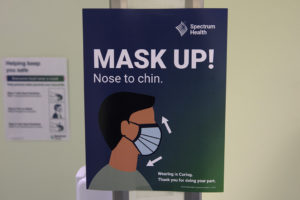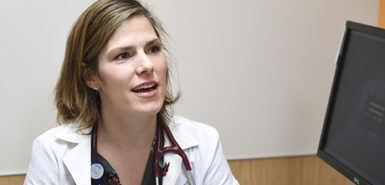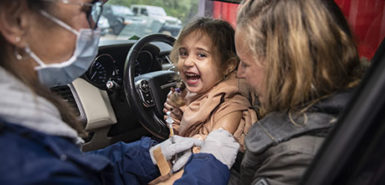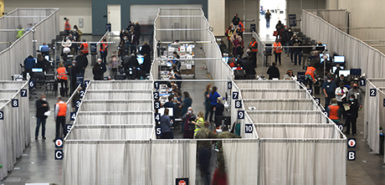
The new mask guidelines for fully vaccinated people leave parents wondering: How can we protect young children from COVID-19?
With the rise in infections among children—some with severe cases that require hospitalization—parents should remain vigilant, said Rosemary Olivero, MD, a pediatric infectious disease specialist with Spectrum Health Helen DeVos Children’s Hospital.
“I wouldn’t throw your mask away,” she said.
Under the recent guidelines from the Centers for Disease Control and Prevention, Americans who are vaccinated against the virus do not have to wear masks outdoors and in most indoor settings.
However, the vaccines are available only for those ages 12 and up.
That means parents with kids 11 and younger must carefully navigate the risks of exposure for their families.
She advises parents to continue to wear masks in many settings—even if they are fully vaccinated—because it will make it easier to show kids the importance of wearing their own masks.
“A lot of children feel uncomfortable wearing a mask if their parents aren’t. We have to be prepared to lead by example.”
She advises mask use in two settings especially:
- Any indoor setting, unless you are in your home or with people you know are vaccinated.
- Crowded outdoor events, such as a festival, where you can’t socially distance.
Dr. Olivero also recommends keeping kids out of grocery stores as much as possible. Consider using curbside pickup or delivery.
And if kids do go to the store, try to minimize the number of shopping trips. Wear masks, use hand sanitizer and teach kids to avoid touching objects in the store.
Playdates and sleepovers
For kids eager to see friends, she recommends outdoor playdates.
“As a rule of thumb, outdoor playdates are quite safe,” she said. “The data shows us the virus is very unlikely to transmit outdoors.
“People probably don’t need masks if they are outdoors and spaced out. The farther the spacing, the lower the risk.”
But she cautions that outdoor playdates can easily move indoors. She encourages parents to set firm boundaries with other families, emphasizing the need to keep activities outside.
How about sleepovers?
They’re not a good idea for unvaccinated kids 11 and younger, Dr. Olivero said.
“The highest risk for COVID-19 transmission comes with a long unmasked exposure. And that’s exactly what a sleepover is,” she said. “It’s not something I would recommend.”
A summer camp in Georgia illustrated the risks involved last year. After one staff member tested positive for COVID-19, the camp closed, and 660 campers and counselors went home. Of the 344 campers tested, 76% had the virus, according to a report by the CDC.
Dr. Olivero understands how much sleepovers mean to children. Her own kids would love to have a sleepover with friends.
She suggests creating an un-sleepover of sorts. Stay together late into the evening, enjoying a campfire or an outdoor movie.
Then head home so everyone can sleep in their own rooms.
To protect others, skip social gatherings if you are sick—or if a family member is ill, she added.
COVID-19 is still circulating in the community. If you have symptoms of the virus, get tested.
Risks of severe illness
The spring surge in COVID-19 infections at Spectrum Health included a large number of children. Although most did not become severely ill, some required hospitalization. In some cases, pediatric patients required life support in the intensive care unit.
“Of the handful who did come into the hospital, from infancy to older teens, the level of care they needed was much, much higher than we had witnessed at any other time during the pandemic,” Dr. Olivero said.
The number of cases peaked in April and has declined since then. But the pediatric population still is “having quite a bit of infection,” she said.
Looking ahead to next fall, she expects children will continue to need masks at school and other indoor spaces.
“We do need to understand that the virus is going to be part of our normal circulating viruses we see seasonally during the year,” she said. “We have to prepare for that, so we don’t set ourselves up for massive disappointment when summer winds down and we go back to our normal routines.”

 /a>
/a>
 /a>
/a>
 /a>
/a>